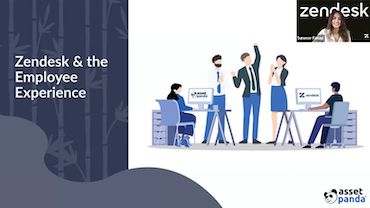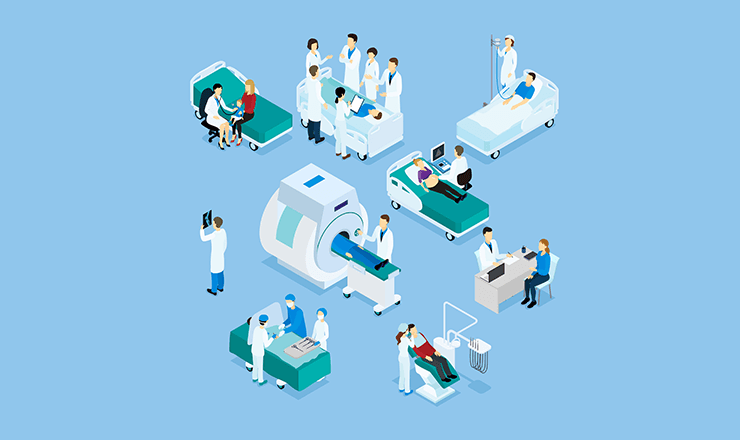How to Save Money in the Healthcare Industry

A 2017 report by the Organisation for Economic Co-operation and Development (OECD) shows admin costs in U.S. health care are the highest in the developed world. They account for over 8% of spending in the sector. The report highlights wasteful health care spending, which sometimes does more harm than good.
There are resources available that can aid the healthcare industry in seeking ways to better educate the public and their employees on preventative practices that even incorporate specific healthcare asset management software to streamline and simplify an otherwise challenging topic.
Healthcare asset management software can help hospitals save money
At 16.9% of GDP, the United States has the highest total health care expenditures in the developed world. Despite this, health outcomes are often among the worst—the United States ranked 26th out of 40 nations in life expectancy at birth, 32nd out of 37th in adult diabetes, 22nd out of 33 for ischemic heart disease mortality, 35th out of 40th in childhood obesity and last in adult obesity rates. What contributes to these staggering numbers, and how can saving money and better practices improve the quality of service patients seek daily?
Identify and evaluate inefficient processes
It’s no secret that our health care system in the U.S. is strained. News stories are plenty about challenges the industry faces and those who work to support it. In talking to friends, family, or co-workers, almost everyone has some story about problems they have faced or horror stories about an incident in a health care facility. Short staff. Broken or missing equipment. Issues with payment or insurance. We all have been there and seen that frustration.
The inefficient processes that fill today’s medical facilities – from the largest hospital chain to the stand-alone clinic on the corner – cause many of our frustrations. Complex insurance rules, providers burdened by excessive paperwork, distorted market signals, and constant technological changes with equipment, treatments, and service delivery are all contributors to inefficient processes that convolute the care we expect and receive.
With all the talk of reducing overhead costs and empowering patients, how is that possible when medical facilities themselves cannot get their own processes under control and focus on serving their patients because they are too concerned with growing costs and inefficient practices?
Re-evaluate the administrative role
In many of today’s medical facilities, administrative overhead absorbs a large portion of the health care workforce and, in turn, more money that health care facilities could put towards medical care teams or equipment. In a 2015 study by the Brookings Institute, an analysis of Census Bureau data shows that just 42% of employees at the average physician’s office are health care practitioners, while 31% are devoted to administrative and office functions, like insurance billing and health records management.
Technology has evolved, and many digital health care software programs have been created to do the tasks that traditional administrative roles undertake. This software has been created to create the optimal conditions for digital-enabled innovation—speed and ubiquity of connectivity; fast, cheap, and more powerful computing; expansion of data collection and analytical capabilities.
Many hospital administrators have started to take notice and take advantage of these programs. They contribute two major factors when it comes to the admin function that used to be time-consuming, frustrating, and potentially prone to error:
- Increase efficiency and performance
- Improve outcomes and change behavior
From digital administration and records, online information resources, and online communities to mobile health/tele-health and big data analytics, health care software is fully automating the administrative role in a matter of minutes versus the standard admin role that took multiple people to operate in the office.
Transitioning the role to a more digital platform will save organizations hundreds of thousands of dollars in excess salaries/benefits that could be better spent on the medical staff and equipment to treat patients rather than staff to do data entry.
That’s not to say that the admin role in medical facilities is going away anytime soon. But the need for excessive numbers of staff to tackle what advances in health care software can handle is an inefficient expenditure that can and should be evaluated.
Hire Nurse Practitioners
While technology is making great strides in reducing the cost associated with the admin side of the health care industry, administrators are also looking at cost-effective staffing measures to treat patients while still providing excellent care.
Nurse practitioners (NPs) are becoming the health providers of choice for an increasing number of Americans each year. NPs are the advanced practice registered nurses. Hence, they are qualified to treat various illnesses, diseases, and conditions, order required diagnostic tests, and perform detailed physical examinations. NPs can deliver as much as 80% of the health services provided by primary care physicians at equal to or better quality, and here’s the big note … at a lower cost.
When you make a doctor’s appointment or have to go to an emergency care facility or ER, who do you typically encounter first when you are in your exam room? The nurse. Many patients don’t have a set primary care provider, and the NP can provide the same type of treatment that the primary physician usually takes on.
Over 40% of hospital physicians take on more patients than they can safely handle. When they have to attend to every patient, it is inefficient and can lead to them being overworked, potentially jeopardizing patient safety. Increasing the number of NPs in a physician's practice increases overall efficiency and decreases the cost of patient visits by as much as 1/3!
In addition to providing a wide variety of health care services, NPs often teach, conduct health-related research, and are active in patient advocacy and the development process of healthcare policy at local, state, and national levels. All of these contribute to educating the public on preventative health care measures. And a more educated public equates to better knowledge on treating what ails them without unnecessary trips to the doctor’s office. As a result, health care staff can spend more time, effort, and equipment treating those who truly need their services.
Find and Implement a Healthcare Asset Management Solution
Regardless of your business or industry, asset tracking is one of the key areas in which your organization is either saving or wasting money. Knowing what assets comprise a medical practice is a daunting task. From office furniture to pharmaceuticals to x-ray and CAT scan equipment, it plays a vital role in patient care. But it is central to the inner workings of a medical facility.
Asset tracking technology is changing the inefficient ways hospitals keep up with their assets and ensuring a more cost-effective way to track and manage all the parts and pieces that keep the facility working. Customizable databases enable employees to determine what information is essential to operate their facility and can change as the practice or the industry changes. You can easily add data such as serial numbers, purchase date, or warranty information in one click from a built-in mobile scanner, and allocated users have instant access to information about any asset in a facility’s inventory.
Adding asset tracking and management practices also ensures that guesswork is a thing of the past. Employees are no longer spending valuable time searching for equipment when it’s needed most. They know where it is and who has it. If equipment needs to be repaired or upgraded, it can be noted in an equipment tracking system.
It’s also helpful for facilities that need to track and consistently order products. Asset tracking software can keep accurate and up-to-date records of what’s in stock and even send alerts when numbers are low so that there’s no excuse for an item, such as a specific medicine, to be out of stock.
Little additions like asset tracking for health care facilities can add up to significant savings for the bottom line and end-of-year audits. Accountability and customer service also increase when organizations know what they have (or don’t have). More focus is placed on the patient than searching for equipment or finding a replacement for something that is broken or un-operable. In the medical industry, time is of the essence. Lives depend on the service and speed of the staff. If they don’t have the resources immediately at hand, it could be too late.
Asset management solutions for the healthcare industry
Asset Panda, the leader in asset tracking and management, has been a trusted and proven partner to health care facilities of every size to manage and reduce the inefficiencies that are costing them, and ultimately you, money. Our asset management software features a healthcare asset tracking platform that ensures medical teams have the necessary information to access critical medical assets.
Designated users can scan each asset with a built-in barcode scanner to access complete histories, generate reports, track maintenance schedules, or submit help tickets on every asset scanned in. Highly configurable, Asset Panda quickly integrates with existing systems, changing as your needs change for unlimited ways to organize and access important information throughout an asset’s entire lifecycle.
Our healthcare asset management platform makes it easy for medical facilities and their staff to manage patient records, locate medical equipment, access maintenance records, and ascertain the status of each piece of equipment.
Asset Panda's Healthcare Asset Tracking Software
Our healthcare asset management platform makes it easy for medical facilities and their staff to manage patient records, locate medical equipment, access maintenance records, and ascertain the status of each piece of equipment.
Nothing is ever 100% in the healthcare industry. It is and probably always will constantly be changing. But finding ways to save money and more efficient practices can have a positive impact on the staff and the patients as well. Asset Panda’s healthcare asset management platform will help you deliver the best in patient care.
Learn why Asset Panda is one of the highest-rated asset management software, and try our software free for 14 days (no card required)!
Related News & Press

Learn more from an Asset Panda expert
Get a FREE consultation with an asset tracking expert to find out how you can transform your asset tracking.
Contact our Sales Team at (888) 928-6112


